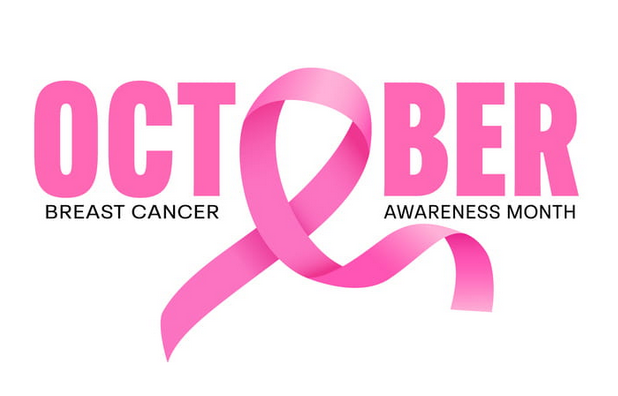 Learn More About Breast Cancer This Breast Cancer Awareness MonthLearn More About Breast Cancer This Breast Cancer Awareness MonLearn More About Breast Cancer This Breast Cancer Awareness Monthth
Learn More About Breast Cancer This Breast Cancer Awareness MonthLearn More About Breast Cancer This Breast Cancer Awareness MonLearn More About Breast Cancer This Breast Cancer Awareness Monthth
Roughly one in eight women will be diagnosed with breast cancer at some point in their lives, according to the American Cancer Society. This is why early detection of breast cancer is so vital. October is Breast Cancer Awareness Month. To celebrate, learn more about breast cancer, preventative screenings, and what risk factors you may have.
Schedule your scan.
Understanding Breast Cancer
According to the National Breast Cancer Foundation, normally, cells complete their designed task and then die and are replaced with another cell. But with cancer, instead of dying, damaged cells stay alive and become what is known as “cancer cells.”
These cancer cells build up over time, creating a mass commonly referred to as a tumor. Tumors invade otherwise healthy tissue and pose the risk of cancer cells breaking away from the tumor and invading other areas of the body.
Breast cancer happens when this process takes place in the breast tissue.
What Are the Risk Factors for Breast Cancer?
The National Breast Cancer Foundation notes that cancer occurs when a cell’s DNA becomes damaged. This damage can be caused by both environmental and genetic factors. You cannot change your genetic predisposition for breast cancer (if you have one), but being aware of it can help you avoid it and/or catch the cancer in its earlier stages.
Genetic Risk Factors
- Biological sex and age (Breast cancer is more common in women over the age of 55.).
- Being Caucasian.
- If abnormal cells in your breast have been detected before.
- Menstruation and reproductive history (If you began menstruation before age 12, didn’t start menopause until after the age of 55, had your first child late in life, or never had children, you’re at a higher risk for breast cancer.).
- Family history (If you have a sister, father, mother, or child diagnosed before the age of 50, your chance is higher.).
- If you carry the BRCA1 and BRCA2 gene mutation.
- If you have dense breast tissue.
Lifestyle Risk Factors
- Being overweight.
- Not exercising.
- An unhealthy diet (Diets high in saturated fat that contain little fruit and vegetables increase your risk.).
- Alcohol (Frequent drinking increases your risk of breast cancer. The more you drink, the higher the risk of breast cancer.).
- Hormone replacement therapy.
The Importance of Early Detection
After skin cancer, breast cancer is the most common cancer in American women. Early detection is key to superior outcomes. When breast cancer is caught early, before it has spread outside of the breast tissue, there is a 99% five-year survival rate. But the longer cancer goes undetected and untreated, the more likely it is to spread and become more difficult to treat.
Early detection strategies for breast cancer include the following preventative screenings:
- Monthly self-breast exams
- Regular clinical breast exams
- Mammograms starting at age 40
Breast Cancer Screening and Preventative Measures
Monthly Breast Self-Exams
The National Breast Cancer Foundation recommends monthly self-breast exams to check for lumps, as well as to assist women in knowing what is normal for their breasts, so they can be aware of changes.
Alert your health care provider any time there is a change in your breast(s), such as:
- A new lump
- A sore spot
- Any change in the way the skin looks
- Nipple discharge
Regular Clinical Breast Exams
The National Breast Cancer Foundation recommends that all women receive a clinical breast exam annually. If a lump is found, your doctor can also feel the lump to assess how concerning it is (most lumps are benign and feel different from a cancerous lump). For a lump, you will likely be referred for further testing to ensure that the lump isn’t cancerous.
Mammograms
According to the Centers for Disease Control and Prevention (CDC), a mammogram is an X-ray of the breast. Regular mammograms reduce the risk of dying from breast cancer.
Magnetic Resonance Imaging (MRI)
The CDC notes that for those at a higher risk of breast cancer, a mammogram may be accompanied by an MRI for more detailed imaging.
Are There Other Ways To Prevent Breast Cancer?
Several lifestyle factors may reduce your risk, such as:
- Maintaining a healthy weight.
- Eating 3.5 to 5 cups of fruits and vegetables a day.
- Getting 20 minutes of physical activity a day to lower the risk of breast cancer.
- Avoiding smoking and secondhand smoke.
- Limiting alcohol intake.
- Scheduling preventative screening tests.
This National Breast Cancer Awareness Month, take a proactive approach to your breast health by learning your risk factors and scheduling your screening. Also consider contacting Preventative Diagnostic Center about which scans may be recommended for you and about a screening mammogram.
